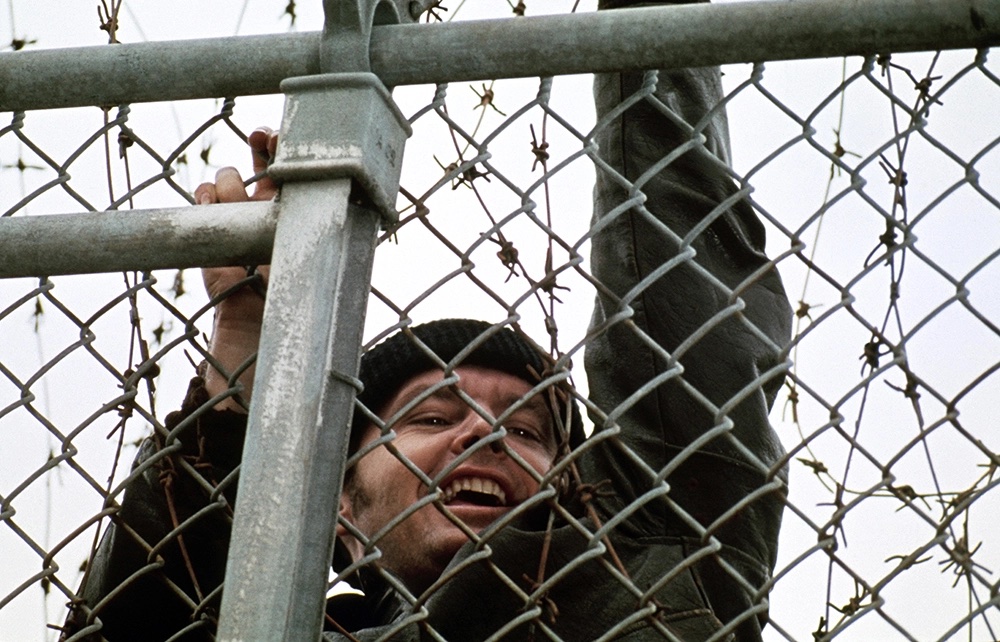I can see why rockstars and other impetuous celebrity types accidentally top themselves with drug cocktails. When you are spaced out on medicaments it’s easy to forget what you have or haven’t taken. A month ago I was prescribed a dose of corticosteroids to see off a chest infection: 60mg a day for four days. Apparently, it’s a big dose; Nurse Catriona says it’s the largest she’s seen. (She was a practice nurse for donkey’s years.) For some folk corticosteroids have a similar effect on the mind as coke. Which means, in my case, I become chatty, overconfident and overassertive, occasionally tipping over into aggressiveness and paranoia. The oncologist told me, rubbing his hands together inside his groin and giggling like a girl, that in his palmy student days, he and his classmates definitely noticed this effect.
From the village pharmacy I received a handsome box of the corticosteroid prednisolone in a burlap carrier bag. Forgetting that the prescription was a one-off, I started swallowing 60mg on the flimsiest pretext: to fortify myself on chemotherapy days, to write a column, or simply to cheer myself up. It wasn’t until Catriona saw me throw a handful into my gob that my mistake came to light — “How long have you been taking 60mg of those?” she asked.
After that, things started to make sense, including my unwonted touchiness and what can be described as paranoia, as evidenced in black and white, thought Catriona, by my recent column about my friend and former editor David Goodhart.
In my mid-twenties, I trained to be a psychiatric nurse at the old West Ham Lunatic Asylum in Essex, whose patients hailed from the poorest part of the East End of London. And because mental illness is not unconnected with poverty, the admission wards were a dazzling showcase of the A-Z of psychiatry. We even had a few syphilitics from before the war and mothers of illegitimate children and armed robbers putting off their sentencing. We also had seclusion cells and electroconvulsive-therapy units and every type of schizophrenia and mania represented there that one could possibly imagine.
There was, of course, paranoia by the yard. The charge nurses were particularly susceptible. But compared with the Grand Guignol of the major psychoses, paranoia was hardly worth mentioning.
What attracted me to this kind of work was its availability, its indoor nature, free board and lodging, and the film One Flew Over the Cuckoo’s Nest, starring Jack Nicholson. I had gone to see it with my dear old Mum, a former nurse. (Mum rooted for Nurse Ratched.) The idea that you could be ill in the mind was new and surprising to me. Because I was unemployed at the time, I thought I’d go and have a look. Training to be a psychiatric nurse was the first of my two attempts at joining the bourgeoisie.
For one year I was a nursing assistant and for two more a student nurse. Training was on the job. I lived, worked and socialized in an 800-bed psychiatric hospital and after a while I forgot what the bounds of normal behavior were. I can vouch for the fact that one gets to enjoy the wider parameters to be found in a psychiatric ward. The sane behavior going on outside the walls was duller, less amusing. I was a good listener. On the admission ward the more talkative patients would spot this and form an orderly queue for exclusive use of my ear. Very often, I noticed, a perceived injustice had led to an irrational grievance, resulting in an obsessive pattern of thought or behavior and a police section. That was forty years ago. Now virtually everyone you talk to is like that. I was fired during my third year for “throwing human excrement at members of the public.”
I know what paranoia is. I can recognize it in others and in myself. Of course some types are more severe than others — Catriona once had a pal who believed that a famous middlebrow novelist was communicating with her via the pattern of spots on her Dalmatian. The former West Ham Lunatic Asylum was infested with centipedes. To keep them down, little silver sachets of poison were taped to the walls at the height of about a foot. Even some of the nurses assumed that these doubled as listening devices.
Then there is the other, milder kind of paranoia, where, if one is out of sorts, even an innocuous comment such as, “A trifle cooler this evening!” bodes ill. I think I’ve been mildly paranoiac for years. The corticosteroids drove it up to fantastic levels, however. Catriona says that I look at her sometimes as if I want to kill her. Not good. Poor Dave Goodhart accepted my apology and explanation with chivalrous simplicity. Meanwhile I’m keeping an eye on myself.
This article was originally published in The Spectator’s May 2023 World edition.

























